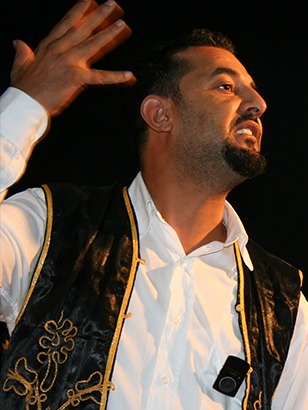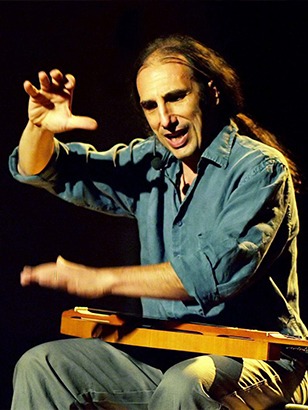Once upon a time, in bygone days, people entertained themselves. But, not by watching TV, going to the movies, reading a book or surfing the Internet. The most common form of entertainment in the Middle East used to be that of the hakawati.
The word hakawati is derived from the Lebanese word hekaya and literary means the one who tells stories. A hakawati is a teller of tales, myths and fables, a storyteller, an entertainer, someone who earns his keep by beguiling an audience with yarn. In the old days, villages had their own hakawatis, but the great ones left their homes and traveled around the country to earn their living.
A hakawati never reads his stories. He always tells them from memory and his style is one filled with metaphors, rhymes and lots of exaggeration. He tells traditional tales from 1001 Nights, chronicles of legendary Arab heroes such as Antar, or stories from the holy Quran. Experimenting with pitch, tone and accent, the storyteller impersonates the many characters he is talking about. A hakawati could go on spinning the same tale daily over several months, always ending on a cliffhanger to keep his audience wanting more, the equivalent of today’s soap opera. According to legend, in the eighteenth century, Ahmad al Saidawi, one of the best hakawati of his time, told the story of King Baybars for three hundred and seventy-two evenings in a café in Aleppo, Syria. This may have been a record. It is also said that al Saidawi cut the story short because the Ottoman governor begged him to finish it.

Telling a riveting story to pass time and learn a few morality lessons along the way was a powerful means to make people step out of their everyday concerns and willingly loose themselves in another world. “It was said that after the ruler of the country, it was the storyteller who occupied the second most important position, as telling a story involved communicating with the masses. Kings, too, depended on storytellers to spread their message,” says Ahmad Yusuf, a hakawati from the UAE.
Today, the hakawati is long gone, replaced by various forms of modern entertainment. The tradition is revived mainly during Ramadan, in some cafés in Sidon, South Lebanon, and during a special festival of storytelling. For the 13th consecutive year, the Monot Theater, Beirut, organized the International Festival of Stories and Monodrame. From the 8th to the 13th of March, storytellers from all over the world got up on stage and captivated the audience with traditional tales from their country. Two storytellers competed every night for the audience’s attention. The festival ended with the highly popular “Liars Contest” where all the storytellers went on stage and improvised stories as cued by the public. For those familiar to the festival, the last day was the culmination of a weeklong journey into popular imagination, word spin, and talent.
Like every year, the lineup for 2012 was quite impressive. Nassim Alouane, Khaled al Naanaa, Sara Kasir and Ahmad Tay from Lebanon, along with Armelle Audigane and Peppo from France, Victor Cova Correa from Venezuela, Kintega Pingwinde Gerard from Burkina Faso and Stelios Pelasgos from Greece did, in a perfect hakawati tradition, take you away from your daily reality into the world of popular creative fiction.
Another particularity of the festival is its venue; it all unfolded in the old crypt of the Saint Joseph Church, home to the Monot Theater. Though not exactly a traditional café, the setting adds a touch of fantasy to the whole event. The well-preserved crypt offers an interesting surrounding for the tales to unravel and people to listen religiously.
The festival was also an occasion to sample young talents. As an opening for each evening, school students from all over Lebanon would get on stage to practice their story telling skills and charm the public with their growing talent.
For further information on the hakawati tradition or to learn its trade (Madrassa du Conte) contact Paul Mattar Monot Theater: +961 1 202 422

What makes a good storyteller?
- The narrative: The story should have a strong plot that captures the interest of listeners.
- The characters: A minimum of 3 to 4 characters should be interacting in a story that will move it towards its climax.
- The action: The story must feature elements of sound and fury: a clash of kings, an adventure on high seas or a quest for something that is undertaken in tough surroundings.
- The spectacle: Music and props work as symbols: a blue drape could represent the sea while a stool may stand for a sword.
- The message: The stories act as an important community service and the storyteller must communicate the importance of living a principled life to the audience.
Articled edited on November 15, 2021
Loading
